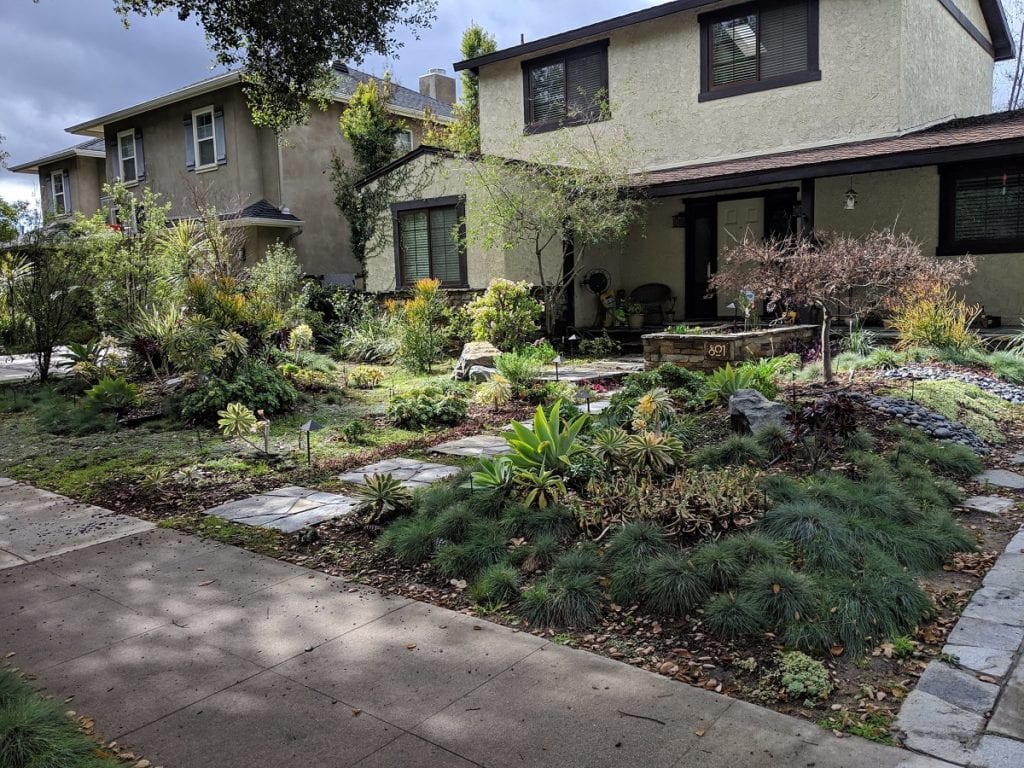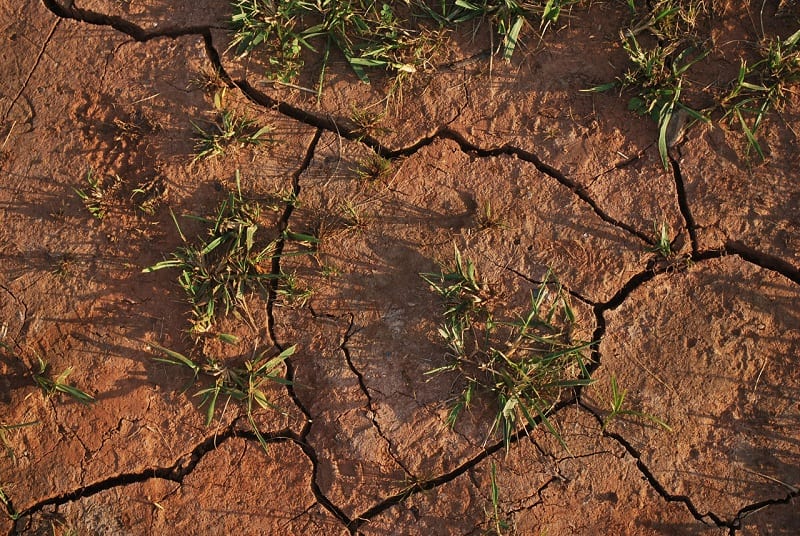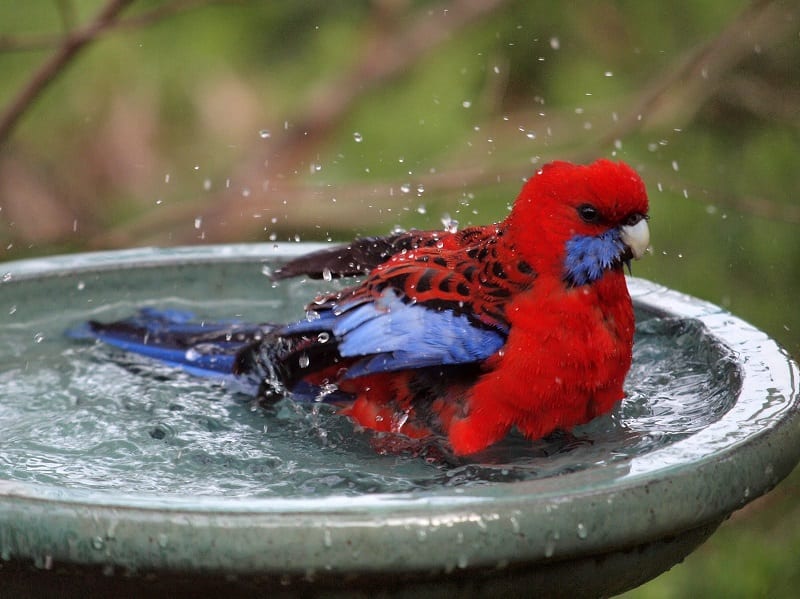
The latest U.N. World Water Development Report concludes that, by 2050, around three billion people could be living in “severely water-scarce areas.”

Most of them live in some of the poorest regions of the world. They do not need to be told about the hardships that already define their lives.
But in a time of unprecedented wildfires, when animals die of starvation and farmers in the drought-ridden areas of Australia have begun selling their breeding stock, it’s fair to say we are catching up.

three billion people could be living in “severely water-scarce areas.”
How to Start Drought-Proof Gardening
Contents
Maintaining a garden while billions are forced to live without water may seem frivolous, but a green buffer around your house will keep your home cooler, according to Jane Canaway in an article for ABC Australia. The plants will also offer shelter and food to all manner of wildlife during the big dry.
One might even say that gardening helps maintain the health of the environment. Trees and plants absorb carbon dioxide during photosynthesis. That process is the most potent of all the natural ways that carbon is removed from the atmosphere and stored on land.
Whether you live in a region with tough water restrictions or not, you can help your garden with appropriate hardware and by adjusting your habits and plant choice.
Hardware
- If you haven’t yet done so, put in water tanks.
- Replace some lawn with native grasses, mulch, pebbles, gravel paths, or other permeable surfaces. This will help to keep water from running off into stormwater drains.
- If you have natural run-off areas, such as beside driveways or on a slope, dig a mini dam or channel to slow down the water. This will allow the run-off time to soak in.
- Keep adding compost and mulch. The more organic matter in your soil, the more water and nutrients it will hold.
- A drip irrigation system is the most efficient way of getting water to plants without evaporation or waste, and a deep soak once a week is more effective than more frequent, light watering. However, if you are on extreme water restrictions, a drip system won’t provide enough water for a deep soak in just half an hour.

Habits
- Put out water for birds. Look for a safe area where small birds can retreat under overhanging branches. A tray of wet sand is a safe drinking station for butterflies and bees, which can drown in open water.
- Collect water wherever you can. Redirect greywater from your washing machines or bath to your gardens. Some reverse-cycle air conditioners also produce recyclable water you can collect.
- Put a bucket in the shower to catch excess water flow, and in the sink to collect the cold water you run while waiting for hot water to come through, or from washing vegetables.
- Wash your car on the nature strip or lawn if possible, to absorb the runoff.
- When you mow, don’t cut your lawn too short. A two-to-three centimeter cover will protect the roots and keep the soil moist.
- Use a wetting agent to prevent soil from becoming water repellent. If you don’t want to buy it, you can easily make your own.
- Use seaweed extract to stimulate plants available in nurseries.
- If you water the garden with a hose, do so in the early morning or evening. This will minimize evaporation.
- Plant in autumn. This will permit new plants the cooler winter to establish themselves before summer rolls in. Top End gardeners should plant at the start of the wet.
- Prioritize your watering. There may be sections of your garden that will survive better on less water. If possible, group all your thirsty plants in one area.
- Water pots by standing them in a large bucket of water until the bubbles stop rising. This way you know they’ve had a good soak and there is less run-off.
- Mulch garden beds regularly. You can lay wood chips, leaves, straw, or even ripped up newspapers over your soil to absorb moisture.
- A chopped-off milk container or empty plant pot can be half-buried near trees and other big bushes and shrubs to help deliver any rainfall or hand-watering closer to deep roots.

Plant Choice
- Replace exotic plants with local native plants. Many of these are already adapted to your soil and conditions. They won’t need as much pampering.
- Instead of relying on water-hungry flowers, use interesting foliage and texture.
- Shrubs and perennial plants require less water than annuals. You can try growing Mediterranean, South African, and Californian plants that are adapted to dry summers. Just remember to always check they aren’t listed as weeds with your local council.
- Many plants with swollen roots store moisture to cope with dry periods. Examples include clivia, bearded iris, bulbs, and the Queensland bottle tree.
- Succulents can be tough, but some are weedy. You can grow Australian native succulents such as pigface, moonflower, different-colored portulacas, parakeelya, flame trees, and boabs.
- Grey-leafed plants generally endure hot dry conditions. Westringia makes a good hedge, saltbushes are good groundcovers, everlasting daisies bring golden color, and Thomasia species bring a cottage-garden look while being tough enough to grow under gum trees.
- Create shade with a fast-growing vine such as Hardenbergia or wonga vine — both get quite large so you will need a solid structure.
- Native cut-leaf daisies come in pinks and purples and are great for edging and butterflies.
- Many herbs thrive on dry, hot hillsides. These include thyme, rosemary, sage, and oregano.
- Grevillea plants are hardy. They come in prostrate form as well as shrubs and trees, and flower in whites, yellows, oranges, pinks, and reds.
- Eremophilas grow in Australia’s outback. They thrive in hot, dry conditions. Their bird-attracting tubular flowers come in purples, pinks, reds, yellow, and green.
- Correas bloom from autumn onwards, feeding birds and bees over the winter, forming a low shrub layer under trees. Coastal species such as Correa alba and the brightly colored cultivars bred from Correa pulchella — are particularly tough.
- Grasses offer texture, movement, structure, and habitat for wildlife. Fill garden gaps with tall spear grass, a tussocky poa or the all-Australian favorite, kangaroo grass.
- If you need tough fruit trees, look to native quandongs, quinces, persimmon, feijoas, and pomegranates.

Minimizing the Effect of the Big Dry on Your Yard
Drought-proof landscaping has become more popular – and even mandatory – in regions that experience little rainfall. Some local governments impose fines or offer incentives to homeowners who replace their thirsty lawns and gardens with water-wise plants.
When dry, hot weather settles in, it affects your landscape in a variety of ways. As a gardener, there’s nothing you can do to prevent a drought. But there are certainly ways you can try to help minimize the effect of the big dry on your yard.








